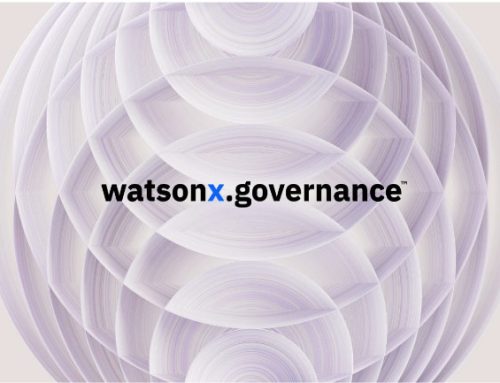
Beyond Chatbots: The Watsonx Playbook for Automating Your Most Complex Business Processes
While the market buzzes about conversational AI and customer service chatbots, the most transformative AI applications are quietly revolutionizing back-office operations.
For regulated industries where precision, compliance, and process integrity are non-negotiable, the real value lies not in generating responses to customer queries, but in automating the complex, multi-step workflows that form the backbone of enterprise operations.
IBM’s Watsonx platform represents a paradigm shift from simple AI tools to comprehensive process automation engines. Unlike standalone AI solutions that excel in narrow use cases, Watsonx provides an integrated ecosystem specifically designed to tackle the intricate, interconnected processes that define operational excellence in highly regulated environments.
The architecture of Intelligent Process Automation (IPA)
Watsonx.ai serves as the cognitive engine for building AI agents that transcend simple pattern matching or text generation. These agents employ sophisticated reasoning capabilities to navigate multi-step decision trees, retrieve contextual information from diverse sources, and execute complex action sequences that mirror, and often exceed, human analytical processes.
The platform’s foundation models are specifically tuned for enterprise scenarios where accuracy and explainability are paramount. Rather than relying on generic large language models, Watsonx.ai leverages domain-specific models that understand regulatory terminology, compliance frameworks, and industry-specific workflows.
This specialization enables the creation of AI agents capable of processing insurance claims, analyzing credit risk assessments, or managing supply chain exceptions with the nuanced understanding previously requiring human expertise.
The multi-agent architecture allows these AI systems to collaborate on complex processes. For instance, in pharmaceutical manufacturing, one agent might monitor production quality metrics while another analyzes regulatory compliance documentation, with a coordinating agent synthesizing insights to trigger appropriate responses across the manufacturing ecosystem.
Unified data access without migration complexity
Traditional AI implementations often stall when confronted with the reality of enterprise data architecture: information scattered across legacy systems, cloud platforms, and departmental silos.
Watsonx.data eliminates this bottleneck by providing a unified data fabric that enables AI agents to access and correlate information without requiring expensive and disruptive data migration projects.
The platform’s lakehouse architecture combines the flexibility of data lakes with the performance characteristics of data warehouses, supporting both structured and unstructured data sources.
This hybrid approach is particularly valuable in regulated industries where historical data must be preserved in its original format while remaining accessible for AI-driven analysis.
Watsonx.data’s semantic layer provides AI agents with contextual understanding of data relationships across disparate systems. When processing a complex insurance claim, for example, an AI agent can simultaneously access policy information from core systems, claim history from legacy databases, and external fraud indicators from third-party services, synthesizing this information to make informed decisions without human intervention.
The platform’s support for multiple query engines, including Apache Spark, Trino, and specialized analytics engines, ensures optimal performance regardless of data type or analysis complexity.
This versatility enables real-time process automation even when dealing with massive datasets or complex analytical requirements.
Trust and governance in mission-critical automation
For regulated industries, AI governance isn’t optional; it’s foundational to successful automation initiatives. Watsonx.governance provides comprehensive oversight capabilities that ensure AI-driven processes maintain compliance, auditability, and explainability throughout their operational lifecycle.
The governance framework implements continuous monitoring of model performance, detecting drift in accuracy or bias that could compromise process integrity.
This proactive approach prevents the gradual degradation of automated processes that can occur when AI models encounter data patterns not represented in their training sets.
Automated compliance checking ensures that AI agents operate within predetermined regulatory boundaries. In healthcare applications, for instance, the governance layer can verify that automated patient data processing adheres to HIPAA requirements, while financial services implementations maintain SOX compliance throughout automated transaction processing workflows.
The platform’s explainability features provide detailed audit trails for every automated decision, documenting the data sources, reasoning processes, and confidence levels that contributed to specific outcomes. This transparency is crucial for regulatory examinations and internal quality assurance processes.
Strategic process identification and implementation
The most successful Watsonx implementations begin not with technology deployment, but with strategic process analysis to identify automation opportunities with the highest ROI potential.
Complex processes characterized by high volume, multiple decision points, and significant manual effort represent prime candidates for AI-driven automation.
Claims processing workflows exemplify this opportunity. Traditional claims handling involves document analysis, policy verification, fraud assessment, and settlement calculation. These are tasks that require accessing multiple systems, applying complex business rules, and maintaining detailed audit trails.
Watsonx agents can execute these entire workflows autonomously, reducing processing time from days to minutes while improving accuracy and compliance.
Supply chain exception management represents another high-value use case. When disruptions occur, AI agents can simultaneously analyze supplier capacity, transportation alternatives, inventory levels, and customer priorities to optimize response strategies. These agents operate continuously, identifying and resolving issues before they escalate to crisis levels.
Operational transformation through intelligent automation
Organizations implementing comprehensive Watsonx automation typically achieve operational improvements far exceeding traditional process optimization efforts.
Processing times decrease by 60-80% while accuracy rates improve significantly, particularly for complex analytical tasks prone to human error.
The platform’s ability to operate continuously provides 24/7 process execution without the staffing challenges associated with round-the-clock operations. This capability is particularly valuable for global organizations serving multiple time zones or industries with time-sensitive processing requirements.
Perhaps most importantly, intelligent process automation frees highly skilled personnel from routine tasks, enabling them to focus on strategic initiatives, complex problem-solving, and innovation activities that drive competitive advantage. This human capital optimization often delivers value exceeding the direct operational savings from automation.
Are your most critical business processes still dependent on manual intervention and human bottlenecks?
Let the experts at ASB Resources design and implement a comprehensive Watsonx automation strategy that transforms your complex workflows into intelligent, self-executing processes. Schedule a call with one of our experts today!








